2025年、スキー愛好家は予算や好みに応じてさまざまな選択肢があります。費用の簡単な内訳はこちらです:
- Snowfeet*(ショートスキー):$150~$690。コンパクトで持ち運びが簡単、通常の冬用シューズやスノーボードブーツに対応。初心者やカジュアルスキーヤーに最適です。
- 伝統的なロングスキー(例:Rossignol、Atomic):$250~$1,100以上。高性能ですが、専用のブーツやバインディング、より多くの収納スペースが必要です。
- スノーボード(例:Burton、Lib Tech):$400~$1,300以上。多用途ですがかさばり、バインディングが付属しないことが多いです。
重要ポイント: Snowfeet* ショートスキーは、従来のスキーやスノーボードに比べて手頃で持ち運びやすい代替品を提供し、利便性とコストパフォーマンスを求める方に最適です。
| 特徴 | Snowfeet* | ロングスキー | スノーボード |
|---|---|---|---|
| 価格 | $150~$690 | $250~$1,100以上 | $400–$1,300+ |
| 携帯性 | バックパックに収まる | かさばり、バッグが必要 | かさばり、バッグが必要 |
| ブーツ互換性 | 通常の靴/ブーツ | 専門ブーツ | スノーボードブーツ |
| 習得の難易度 | 簡単 | 急斜面 | 中程度 |
| 地形の選択肢 | 整地、パーク | オールマウンテン、POWDER | オールマウンテン、パーク |
Snowfeet* はカジュアルスキーヤーや旅行者に実用的で手頃な選択肢を提供し、一方で従来のギアは特定の地形で高性能を求める方に適しています。
2025年のベスト予算スキー
1. Snowfeet* ショートスキーとスケート
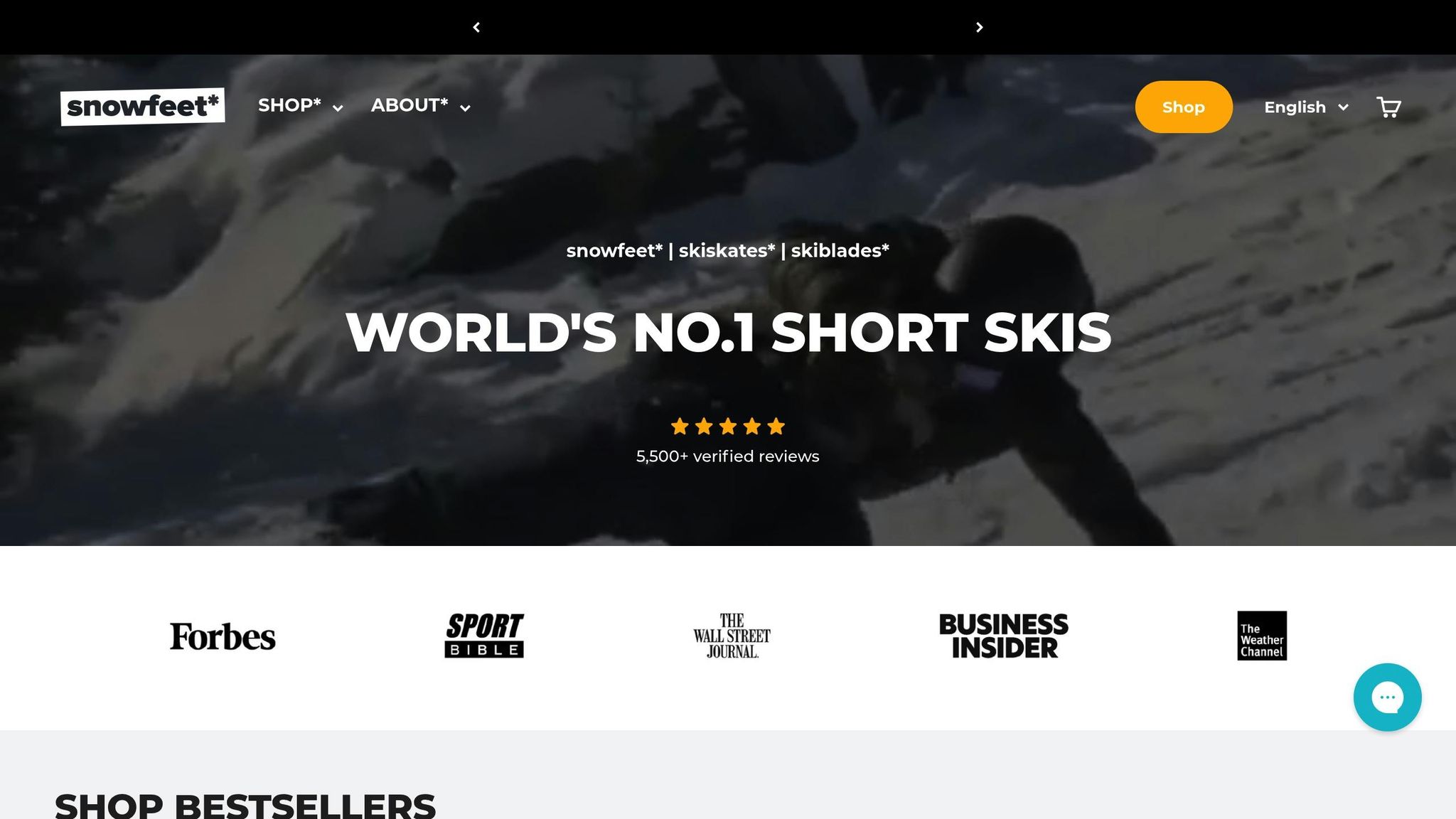
Snowfeet* はコンパクトで手頃な価格のショートスキーとスケートで冬のスポーツに新しい風をもたらしました。これらの革新的な代替品は、従来のギアと比べて独自の特徴と実用性で際立っています。
価格帯(USD)
Snowfeet* 製品はさまざまな予算に対応しています。価格の概要はこちら:
- Snowfeet Mini Ski Skates (38 cm): 150ドルから、初心者に最適なエントリーモデル。
- Snowfeet PRO (50 cm): より高いパフォーマンスを求める方に199ドルで提供。
- Skiskates (44 cm): プロ仕様は390ドルから。
- Skiblades (65 cm): 長めのモデルは450ドルから。
- Skiblades (99 cm) と Snowfeet POWDER (99 cm): 価格は490ドルから。
- Snowfeet Short Skis (120 cm): 690ドルで購入可能。
これらの価格は手頃さだけでなく、各製品に詰め込まれた賢い機能も反映しています。
主な特徴
Snowfeet*ギアの大きな利点の一つはその多用途性です。高価なスキーブーツを必要とする伝統的なスキーとは異なり、Snowfeet*製品は普通の冬用シューズやスノーボードブーツに装着できます。これにより、専門的なフットウェアの追加費用を省けます。ニーズに合わせて3種類のバインディングオプションを提供しています:
- Basic: ほとんどのブーツに合うコストパフォーマンスの高い選択肢。
- Standard: 耐久性を重視し、大きめのブーツ用に追加ストラップ付き。
- Pro X: 最大の快適さ、耐久性、調整機能を提供するトップクラスのオプション。
特にSkiskatesはデュアル対応で、スキーブーツとスノーボードブーツの両方に対応します。スノーボーダー向けには、バインディングは調整が簡単で手頃な価格、さらに安定性を高める滑り止め表面が付いています。これらの細やかな配慮が、Snowfeet*ギアを伝統的な装備の賢い代替品にしています。
コンパクトで持ち運びが簡単
携帯性もSnowfeet*の際立った特徴です。Skiskatesはわずか44 cm(17.3インチ)の長さで、ミニスキーはさらに小さいです。軽量で耐久性のあるプラスチック製のため、標準的なバックパックに簡単に収まります。ルーフラックや大型のスキーバッグは不要で、ただパックして出かけるだけ。このコンパクトなデザインは、かさばる伝統的なスキーと比べて収納や輸送が非常に楽です。
あらゆる地形に対応
巧妙なデザインのおかげで、Snowfeet*製品はさまざまな環境で優れたパフォーマンスを発揮します。ゲレンデを滑るとき、トレイルを探検するとき、パークで遊ぶとき、あるいは自宅の庭で楽しむときでも、これらのスキーは地形に適応します。短い長さはコントロールと操作性を向上させ、長いスキーでは難しいタイトなターンやトリックに最適です。例えば:
- Snowfeet POWDER (99 cm): パウダースノーに理想的です。
- 短めのモデル: 整備されたコースやパークのフィーチャーに最適です。
この多用途性により、Snowfeet*の1組で伝統的なギアの複数を置き換えることができ、冬の冒険においてより多くの価値と柔軟性を提供します。
2. 伝統的なロングスキー(例:Rossignol、Atomic)
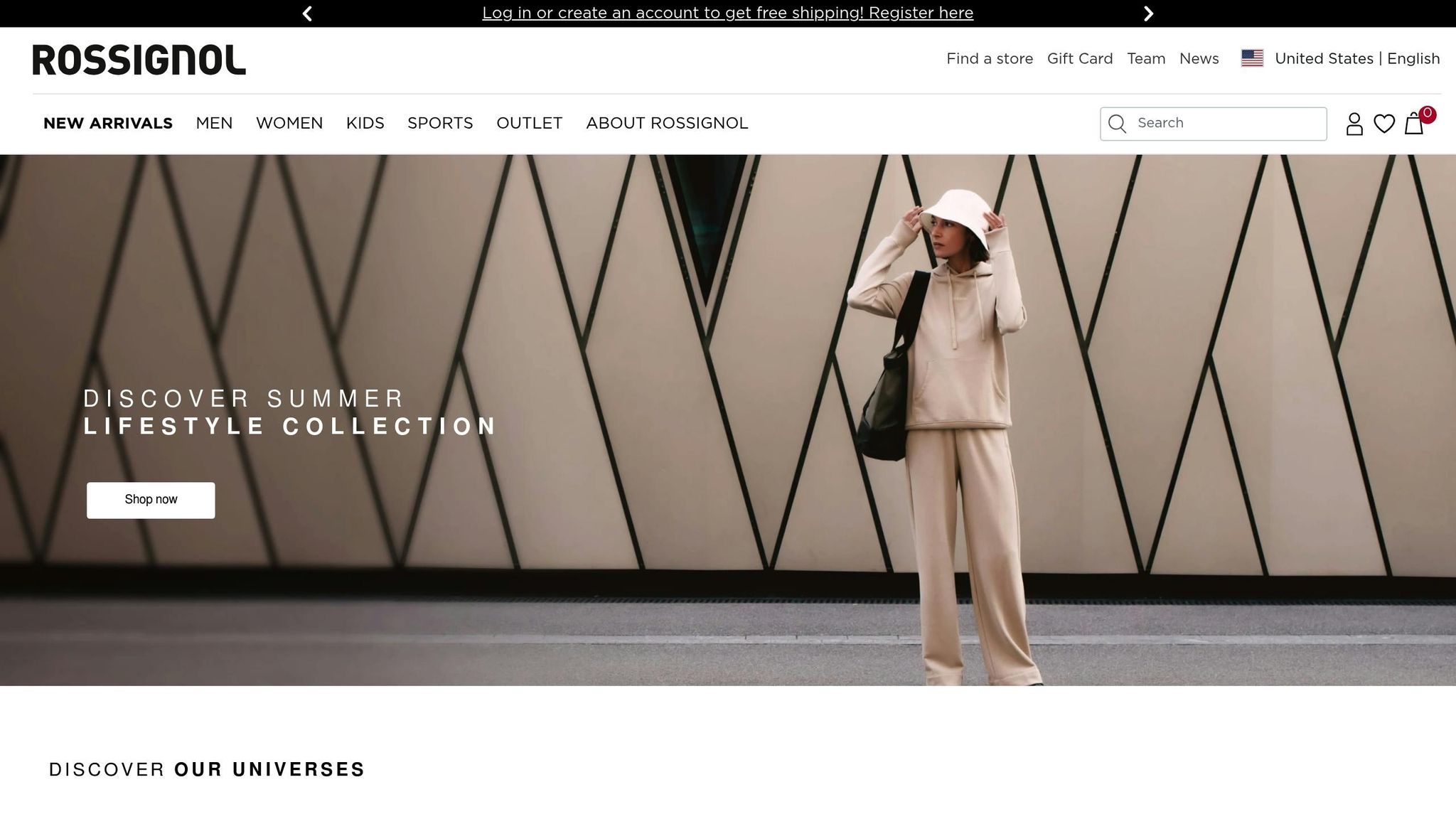
RossignolやAtomicのようなブランドの伝統的なロングスキーは、その性能で長年信頼されてきました。しかし、Snowfeet*のような新しくコンパクトな選択肢と比べると、コストが高く複雑さも増します。Atomicは1955年からスキー界の定番であり、Rossignolはさまざまなスノースポーツカテゴリーでよく知られています。
価格帯(USD)
従来のスキーの価格は大きく異なります。エントリーモデルは約250ドルから始まりますが、高級アルペンスキーは割引後でも700ドルを超えることがあります。例えば、Rossignol Essential Skis 172cmはLook SPX 13 GWバインディングと組み合わせて、元の1,150ドルから699.96ドルに割引されています。これらの価格は、従来のスキーがより多用途な代替品に比べて高価であることを示しています。
付属機能(例:バインディングと互換性)
価格だけが考慮すべき点ではなく、互換性も重要な要素です。Rossignol Essential Skisのようにバインディングが付属するスキーもありますが、多くの高級モデルには付属していません。つまり、バインディングだけで200~500ドル、さらにプロの取り付けサービス費用がかかる可能性があります。そしてスキーブーツもブランドやフィッティングサービスによって300~800ドル追加されることを忘れてはいけません。予算重視の方には、MarkerのXcelレースバインディングのように多くのDIN設定をカバーしつつ手頃な価格の選択肢が人気です。
携帯性と収納
従来のスキーは通常63~75インチの長さで、保管や輸送が簡単ではありません。車のルーフラックや航空旅行用の専用スキーバッグが必要になることもあります。自宅での保管も6フィートを超えるスキーには専用スペースが必要です。頻繁に旅行する人は継続的な保管料がかかることもあります。これは、コンパクトで旅行に適したSnowfeet*のようなギアとは大きく異なり、はるかに簡単な保管と輸送体験を提供します。
地形の選択肢
従来のロングスキーは特定の条件に合わせて作られることが多いです。アルペンスキーは整備されたコースや深いPOWDERで輝き、クロスカントリーモデルは整備されたトラック向けに設計されています。この専門性のために、本格的なスキーヤーは異なる地形に対応するために複数のペアを所有することが多く、コストと保管の負担が増えます。RossignolやAtomicのレーシングスキーは硬い雪面で優れていますが、混合条件では苦戦することがあります。フリーライドモデルはPOWDERでは素晴らしいですが、整備された斜面では扱いにくく感じることもあります。これらのスキーは速度と安定性を重視して設計されていますが、多くの現代スキーヤーが好む遊び心のある柔軟性には欠けています。
sbb-itb-17ade95
3. スノーボード(例:Burton、Lib Tech)

BurtonとLib Techは長年にわたりスノーボード界の定番であり、高品質なボードと熱心なファン層で知られています。しかし正直なところ、従来のスノーボードは高価で管理が少し面倒です。そこで2025年にはSnowfeet*のような新しい選択肢が登場し、状況を一変させています。より手頃で持ち運びが簡単、そしてスノーボードに匹敵する多用途性を備えています。
価格帯(USD)
スノーボードは安くありません。エントリーレベルのモデルは約$400からで、中価格帯は通常$500から$700の間です。プレミアムボードを狙うなら$800以上を覚悟してください。例えば、Lib Tech T. Rice Golden Orcaは$849.99で、高級モデルのLib Tech Apex Orcaは$1,300に達することもあります。これは予算に優しいSnowfeet*と比べると大きな投資です。
付属機能(例:バインディング、互換性)
覚えておくべきことの一つは、ほとんどのスノーボードはデッキのみで販売されているため、バインディングは別途購入が必要なことです。互換性も複雑です。例えばBurtonは独自のチャネルシステムを使用し、他のブランドは伝統的な4x4または2x4のマウントパターンを採用しています。Lib TechのMagne-Tractionのような氷上でのグリップ向上機能や、Burtonの異なるライディングスタイルに合わせたキャンバープロファイルなどの特徴的な機能を持つボードもありますが、これらの特殊機能はSnowfeet*のオールインワン設計と比べると柔軟性を制限することがあります。
携帯性と収納
スノーボードの欠点はかさばることです。専用のバッグが必要で、空港での移動を楽にするために車輪付きのバッグもありますが、それでも超コンパクトなSnowfeet*と比べると面倒です。携帯性はスノーボードの得意分野ではありません。
地形の選択肢
スノーボードは特定の条件を念頭に設計されているため、多用途性が制限されることがあります。Lib Tech Travis Rice Orcaのようなオールマウンテンボードはさまざまな地形に対応しますが、フリースタイルボードはパーク向け、POWDERボードは深雪に優れていますが整地されたコースでは苦戦します。Capita Defenders of Awesome($439.96)のような注目のオプションは多用途性で賞を受賞していますが、それでもSnowfeet*の多地形適応性には及びません。
コスト、携帯性、地形の選択肢を考慮すると、なぜSnowfeet*が人気の選択肢になっているのかがよくわかります。柔軟性と価値を求める現代のスノースポーツ愛好者にとって、より実用的なソリューションです。
長所と短所
こちらは、Snowfeet*のショートスキー/スケートが伝統的なロングスキーやスノーボードとどう比較されるかの簡単な概要です。表の下で詳細を掘り下げます。
| 特徴 | Snowfeet* Short Skis/Skates | 伝統的なロングスキー | スノーボード |
|---|---|---|---|
| 価格 | $150~$690 | $800以上 | $400~$900以上 |
| 携帯性 | バックパックや荷物に収まる | かさばり、専用バッグが必要 | かさばり、専用バッグが必要 |
| ブーツ互換性 | 通常の冬用靴またはスノーボードブーツで使用可能 | 専用のスキーブーツが必要 | スノーボードブーツが必要 |
| 習得の難易度 | 初心者に優しい | 初心者向けに急斜面 | 中程度 |
| 地形パフォーマンス | 整備されたコース、パーク、一部POWDER | オールマウンテン、POWDER | オールマウンテン、パーク、POWDER |
| 収納要件 | 最小限のスペースで済む | 大きな収納スペースが必要 | 大きな収納スペースが必要 |
| セットアップ時間 | 素早く簡単 | より多くの準備時間 | 適度な準備時間 |
| 旅行の利便性 | 航空会社の料金なし;頭上の荷物に収まります | 追加の手荷物料金がかかる場合があります | 追加の手荷物料金がかかる場合があります |
コストと利便性
価格面では、Snowfeet*が明らかに勝っています。プレミアムモデルでもほとんどのエントリーレベルの伝統的なスキーやスノーボードより安価です。さらに、通常の冬用シューズやスノーボードブーツで使える設計なので、特別な靴に余分な費用をかける必要がありません。コンパクトなサイズも利点で、バックパックや荷物に簡単に収まり、追加の手荷物料金や運搬の問題がありません。伝統的なスキーやスノーボードは特別なバッグや追加の手間が必要で、特に飛行機利用時は大変です。
パフォーマンスと使いやすさ
それぞれの選択肢には強みがあります。伝統的なスキーは多用途性で無敵で、深いPOWDERからオールマウンテンの地形まで対応します。スノーボードはパーク、POWDER、オールマウンテンで輝きます。一方、Snowfeet*は整備されたコースやパークの地形に最適です。また、学習曲線が非常に緩やかで、自信を早くつけたい初心者に最適です。
メンテナンス面では、Snowfeet*は手間がかかりません。伝統的なスキーやスノーボードのように定期的なワックスがけやエッジ調整は不要です。収納面でも優れており、伝統的なギアのように大きなスペースを必要としません。
Snowfeet*はハードコアなライダーの伝統的なスキーやスノーボードの代わりにはならないかもしれませんが、カジュアルユーザーや携帯性と楽しさを求める人には際立った選択肢です。
結論
2025年に質の高いスキーをお探しなら、Snowfeet*は素晴らしい価値を提供します。価格は150ドルから690ドルで、1,000ドルを超えることもある伝統的なセットアップの手頃な代替品です。
しかし、手頃な価格だけが強みではありません。Snowfeet*は利便性でも輝いています。かさばるスキーギアのように特別な輸送が必要なく、通常の冬用ブーツやスノーボードブーツとシームレスに使えます。コンパクトな設計により、大きな装備を運ぶ手間を省き、旅行者に最適です。
しかし、Snowfeet*の真の魅力はその多用途性にあります。Burtonのような伝統的なスノーボードが主にリゾート向けに設計されているのに対し、Snowfeet*は整備された斜面、トレイルシステム、さらにはパークでも優れたパフォーマンスを発揮します。この適応力が、複数のギアを持つ必要をなくすオールインワンの選択肢となっています。
そして、忘れてはならないのが高評価のレビューです。認証済み購入者からの平均評価は5つ星中4.9で、顧客の声がその価値を物語っています。イギリスの満足したお客様、ヴァネッサさんの言葉を借りれば:
"間違いなくこれまでで最高の買い物の一つです。"
高額をかけずにスノースポーツを楽しみたい方には、Snowfeet*が優れた選択肢です。初心者でも、携帯性と楽しさを求める経験者でも、手頃な価格、利便性、パフォーマンスのバランスが際立っています。
よくある質問
なぜ伝統的なスキーやスノーボードよりSnowfeet*を選ぶべきですか?
Snowfeet*は伝統的なスキーやスノーボードのスマートでコンパクトな代替品として注目を集めています。かさばるギアを持ち運ぶ必要はありません - Snowfeet*は軽く、小さく、超ポータブルで、スキー場への短い旅や雪の街中にも最適です。さらに、重いビンディングや複雑なセットアップも不要。装着するだけで準備完了です。
彼らのユーザーフレンドリーなデザインは、スノースポーツを覚えたい初心者にぴったりですが、新しいものを求める経験者にも刺激的です。Snowfeet*は伝統的なスキーやボードが扱いにくく感じる小さな斜面や狭いスペースで輝きます。そしてここがポイント - 財布に優しいので、RossignolやAtomicのような高級ブランドと比べてスノースポーツをより手軽に楽しめます。これらのブランドはしばしば上級者向けで価格も高めです。
新しい雪の楽しみ方を求めている方も、楽しさを損なわないコスト効率の良い選択肢を探している方も、Snowfeet*は冬の冒険に新鮮な視点を提供します。
Snowfeet*製品は異なる雪質や地形で伝統的なスキーと比べてどうですか?
Snowfeet*のギアは様々な雪質や地形に対応できるよう設計されており、抜群の機動性を誇ります。コンパクトなデザインのおかげで、特に整備されたトレイル、圧雪、テレインパークでの素早く鋭いターンや正確なコントロールに最適です。携帯性と利便性を重視するなら、これが確かな選択です。
深いPOWDERを滑ったりバックカントリーに向かうなら、RossignolやAtomicのような伝統的なスキーの方が適しているでしょう。大きなサイズが浮力と安定性で優位をもたらします。しかし、Snowfeet*のShort Skisはコントロールと使いやすさで輝きます。軽量で持ち運びが簡単、ほとんどの地形でパフォーマンスを損なわずにスキーの新しい楽しみ方を提供します。
Snowfeet*のShort SkisやSkiskatesを使う際に追加費用や必要なギアはありますか?
Snowfeet*のShort SkisやSkiskatesで最大の出費は、まあ、ギア自体です。価格は通常$150から$450の間で、選ぶモデルによります。ただし、パッケージには含まれていないため、対応する冬用ブーツやスノーボードブーツが必要になることを覚えておいてください。
追加で何かを買う必要はありませんが、多くの人はヘルメットや膝当てなどの保護具を選びます。特に初心者や急な斜面に挑戦する予定の方には賢い選択です。安全第一ですよね?





















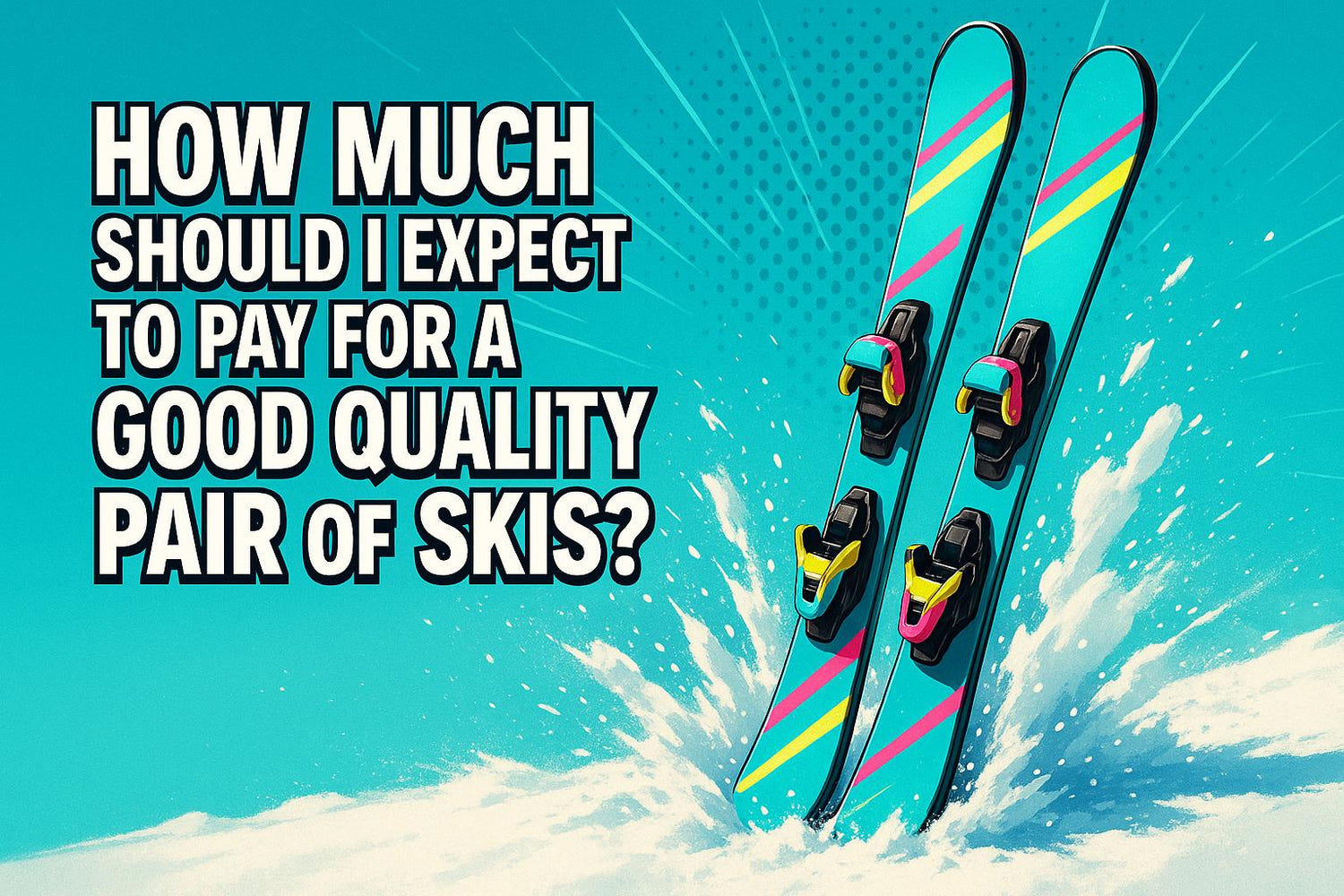
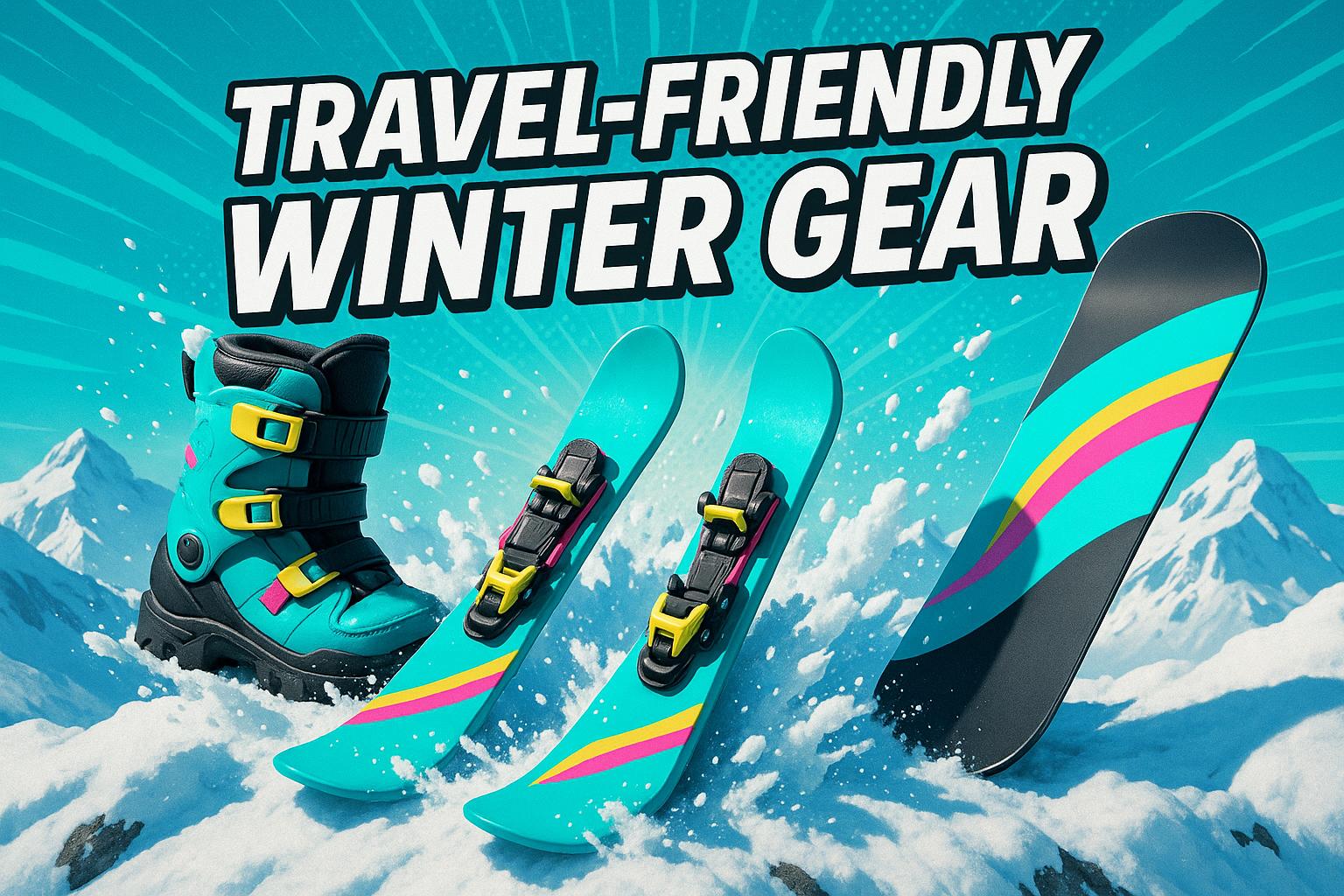
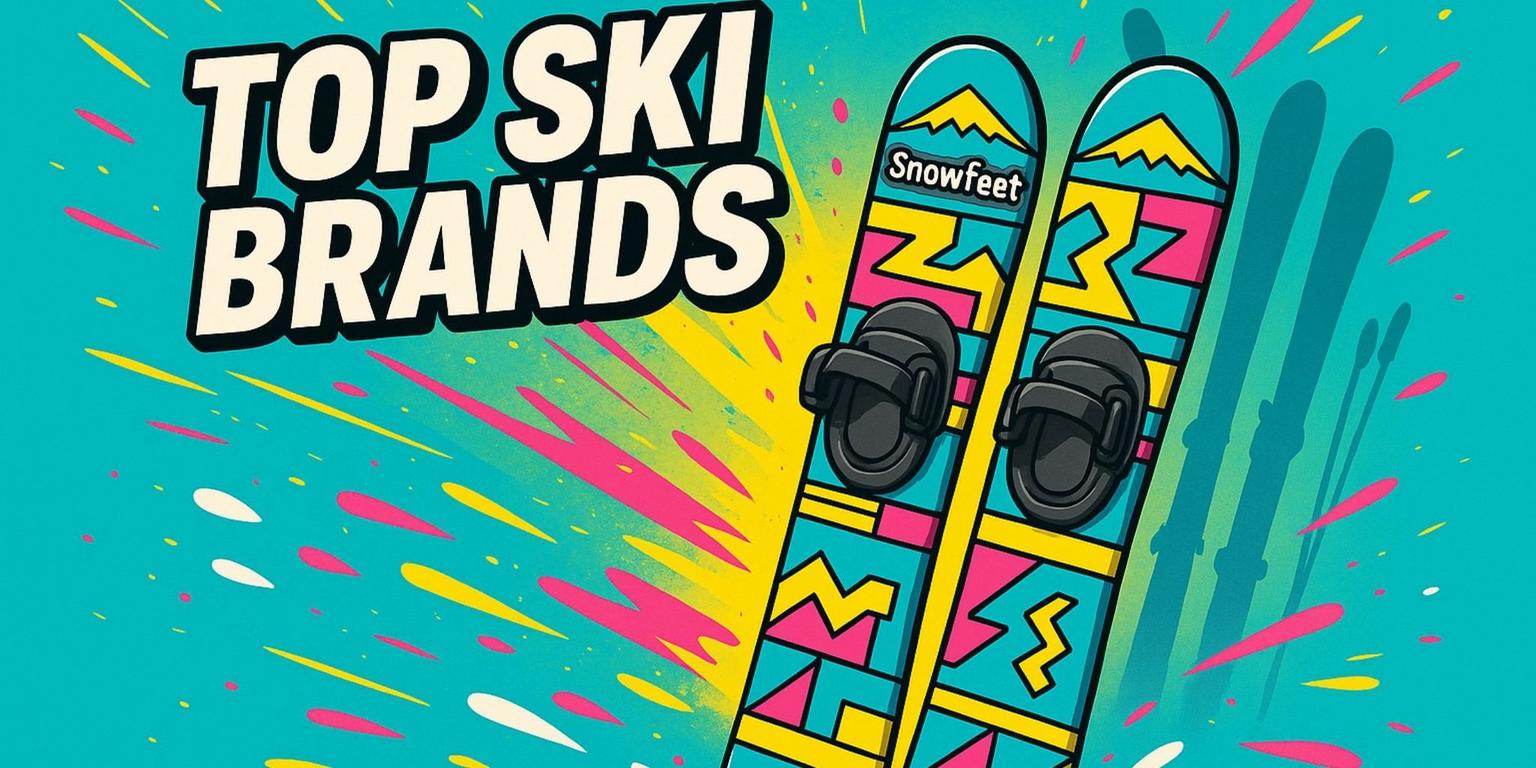










コメントを残す
このサイトはhCaptchaによって保護されており、hCaptchaプライバシーポリシーおよび利用規約が適用されます。